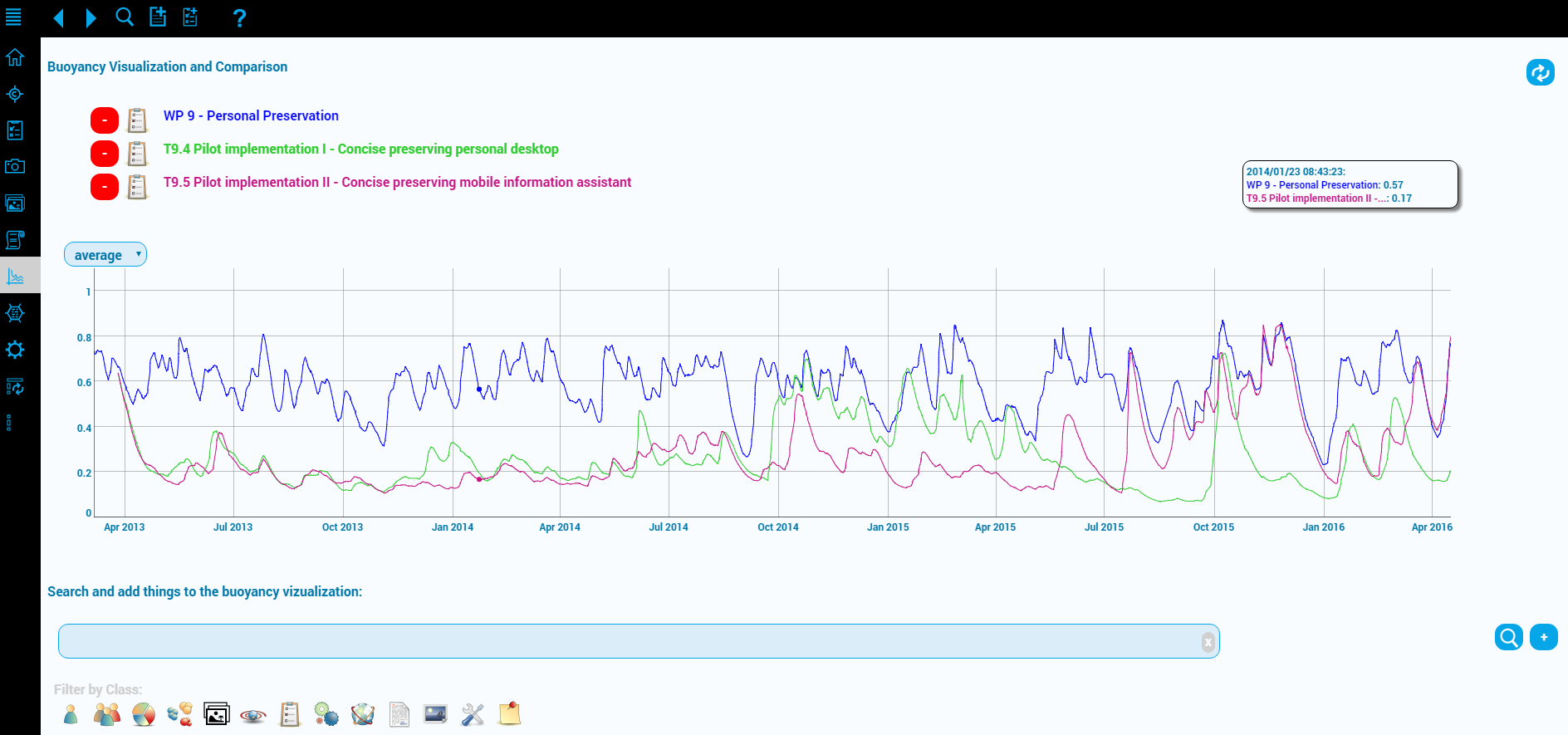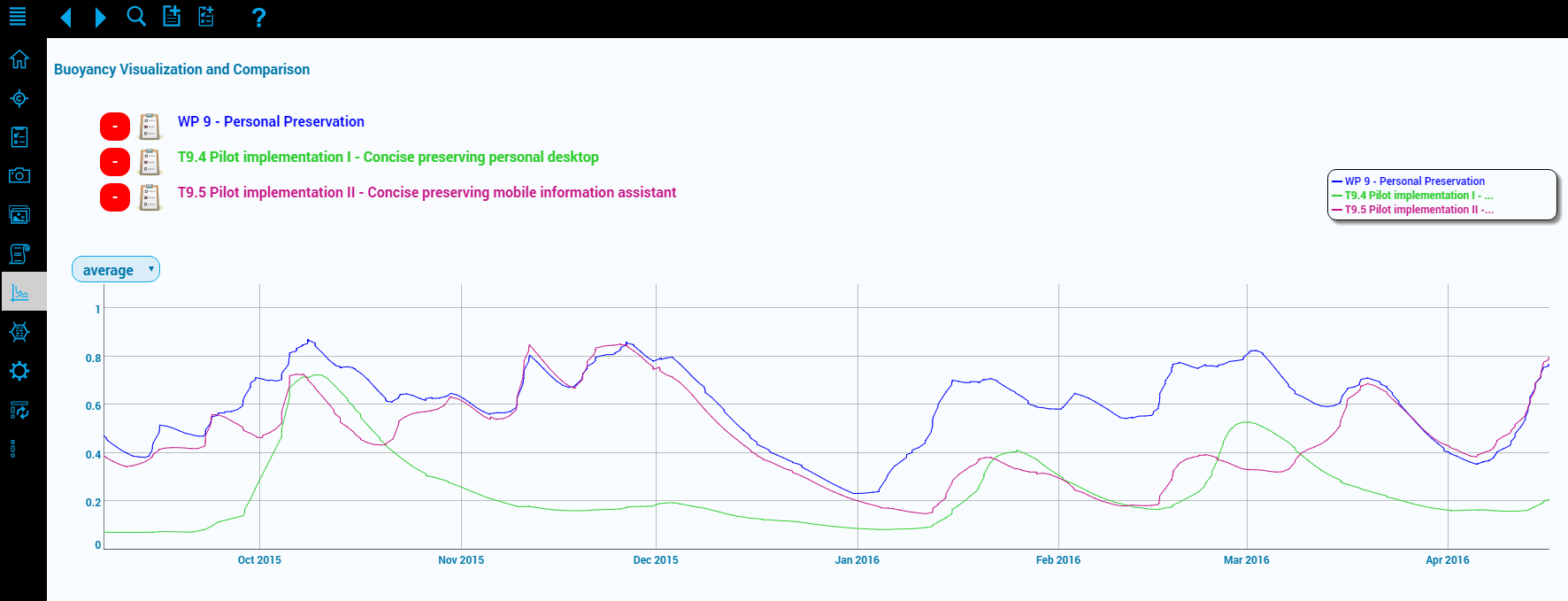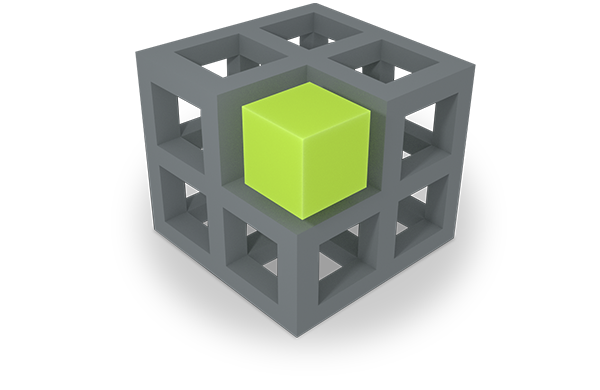9.2.1. Forgetting means hiding
Forgetting in the ForgetIT project is, of course, about actually deleting files.
But that is not enough. We have to relief the user and take away the burden to cognitively interact or even view old,
irrelevant stuff.
This means, forgetting starts with hiding.
Therefore, the concept of "memory buoyancy" (MB) is integrated into the semantic desktop. For every thing in the PIMO (and also for every referenced file there) a MB value is computed and kept up-to-date, whereas:
-
High MB values are used for important, actually needed and actually used stuff.
These things should appear at the top of search/browsing results.
Ideally, very high things should be placed near the user's finger tips - ready to be used when he or she needs it. -
Low MB values is used for stuff that has not been used for a long time
and for items which are recently used, but have lost importance quickly (e.g., an irrelevant meeting without any action item).
Ideally, low buoyant things should be hidden from the user to allow him/her to concentrate on important issues rather than being distracted by being forced to look and recognize old stuff.
On the server side, the PIMO server has been enriched with automatic and continuous re-calculation of MB values. The server makes use of the interaction evidences from the users triggering the PIMO clients and GUIs. Every time the user action can be safely interpreted as an information "access", the server triggers a re-calculation of the MB values for touched things. That way, the MB calculation is done automatically without any required user interaction.
On the client side, the Pimo 5 GUI makes use of the calculated MB values by hiding things with low buoyancy. This is demonstrated in the following video:
9.2.2. Using Memory Buoyancy in PIMO5 search
Managed Forgetting also allows to hide results with low memory buoyancy in search results. The following video shows how this is achieved in PIMO5. Especially, look out for all those emails which were once relevant but showing them every time would overwhelm the user.
9.2.3. Inspecting Memory Buoyancy in PIMO5
For inspection purposes, we included a MB Graph Viewer allowing to see and compare MB history of things in the PIMO. We are also able to change the MB algorithm and replay the MB calculation for the PIMO.
The screenshot below shows three tasks from ForgetIT (the Personal Preservation work package (WP9) task and two subtasks Pilot I and Pilot II). Overall, a change between development of pilot I and then pilot II is visible, whereas the supertask is high buoyant nearly all the time.


